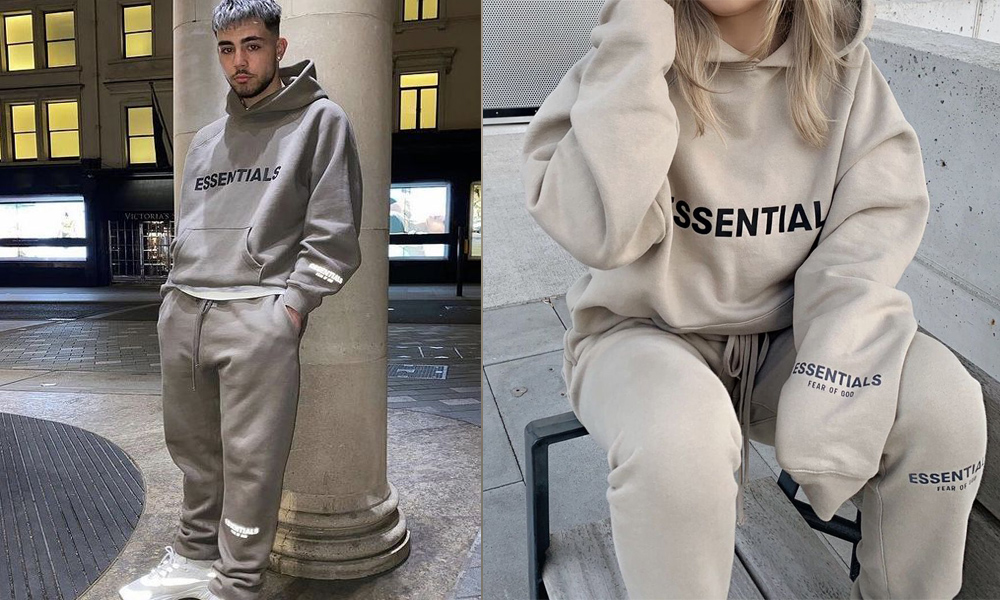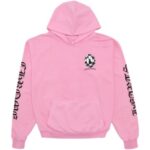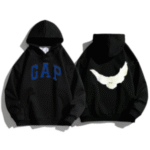The Hoodie and the Environment: Sustainable Choices. Hoodies are a comfortable and versatile piece of clothing, but like many fashion items, they come with environmental consequences. From the materials used to make them to the production processes and the lifecycle of the garment, 1977 Essentials Hoodie can contribute to pollution and waste. Fortunately, there are plenty of ways to choose eco-friendly hoodies and incorporate sustainable practices into your wardrobe. Here’s a closer look at how the hoodie industry is evolving to become more environmentally responsible.
Sustainable Fabrics: The Foundation of Eco-Friendly Hoodies
The materials used to make a hoodie have a significant impact on its environmental footprint. Organic cotton is one of the top choices for sustainable hoodies, as it’s grown without harmful pesticides and requires less water than conventional cotton. Another option is hemp, a highly sustainable fiber that grows quickly and needs minimal water and chemicals. Recycled polyester, made from post-consumer plastic bottles, also plays a key role in reducing waste and energy consumption, offering a sustainable alternative to virgin polyester.
The Shift to Ethical Manufacturing Practices
Manufacturers are increasingly adopting ethical practices to reduce the environmental impact of hoodie production. This includes ensuring fair labor conditions, reducing water and energy usage, and limiting chemical waste. By prioritizing ethical manufacturing, brands are not only making a positive environmental impact but also promoting social responsibility, which encourages transparency and consumer trust in the process.
Recycling and Upcycling: Giving Old Hoodies a New Life
Recycling and upcycling are powerful tools in creating a more sustainable fashion industry. Many brands now offer programs where you can return your old garments, including hoodies, for recycling or repurposing. Instead of ending up in landfills, old fabrics can be turned into Sp5der Worldwide Hoodie new products, from clothing to accessories. Supporting brands that practice these methods helps reduce waste and contributes to the circular economy.
Second-Hand Shopping: A Sustainable Alternative
Buying second-hand clothing is one of the best ways to reduce the environmental impact of your wardrobe. Thrift stores, online platforms, and clothing exchanges allow you to find hoodies that are still in great condition, offering a sustainable alternative to purchasing new items. By choosing second-hand, you’re extending the life cycle of a hoodie and keeping it out of the landfill.
Eco-Friendly Dyeing and Printing Techniques
Traditional dyeing and printing methods can be very polluting, using chemicals and large amounts of water. However, many sustainable hoodie brands are turning to natural dyes and waterless dyeing techniques to reduce their environmental impact. These methods are not only better for the planet but can also result in unique, one-of-a-kind designs.
Reducing Energy Consumption: Washing and Caring for Your Hoodie
Once you’ve invested in an eco-friendly hoodie, it’s important to care for it in a way that minimizes environmental impact. Washing clothes in cold water, air-drying instead of using a dryer, and reducing the frequency of washes can all help save energy and extend the life of your hoodie. The longer you keep your hoodie in good condition, the less often you’ll need to replace it, reducing waste.
The Role of Certifications in Sustainable Hoodie Production
When shopping for sustainable hoodies, look for certifications that indicate eco-friendly practices, such as Global Organic Textile Standard (GOTS) for organic cotton or Fair Trade certification for ethical production. These certifications ensure that a brand is meeting environmental and social standards, so you can make informed decisions when choosing which hoodie to buy.
Supporting Brands Committed to Sustainability
More and more brands are making sustainability a central part of their business models. By choosing brands that prioritize environmental responsibility, you’re supporting companies that are actively working to reduce their environmental impact. Whether it’s through using sustainable materials, ethical manufacturing, or investing in eco-friendly initiatives, these brands are leading the way in creating a more sustainable fashion industry.
Sustainable Hoodie Trends to Watch Out For
As sustainability becomes more mainstream, the hoodie industry continues to evolve. Expect to see more brands adopting eco-friendly materials, innovative recycling programs, and designs that prioritize durability. Trends like minimalist design and functional, long-lasting hoodies are becoming increasingly popular as consumers embrace quality over quantity. By keeping an eye on these trends, you can stay ahead of the curve and make conscious fashion choices.
Conclusion
Hoodies don’t have to be synonymous with waste and pollution. By choosing sustainable fabrics, supporting ethical manufacturers, recycling old garments, and embracing second-hand shopping, you can make a positive impact on the environment. The hoodie industry is evolving, and with more eco-conscious brands emerging, it’s easier than ever to make sustainable choices. Small steps, like caring for your hoodie properly and supporting brands committed to sustainability, can make a significant difference in reducing your fashion footprint. By making informed decisions, you can enjoy the comfort of a hoodie while also helping to protect the planet.


